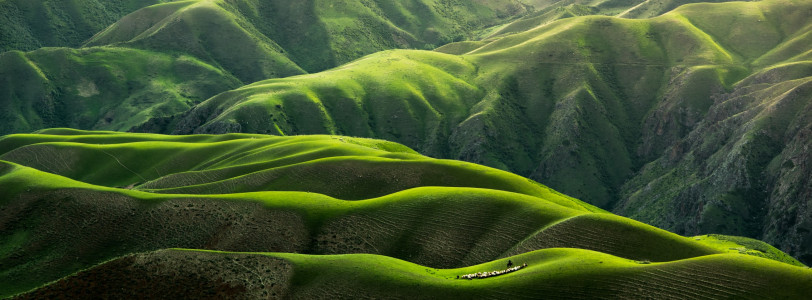In mainstream climate awareness, there are often ideas of protecting a pristine ‘wilderness,’ free from the damaging role of humans. This is proposed as one of the main solutions to the environmental crisis, as many feel that most human interaction with nature is, firstly, very recent and secondly, inherently destructive. The result is a scientific justification for conservation that excludes all human involvement, meaning we often are unaware of the positive human influences on the environment.
A simple definition of wilderness is ‘an uncultivated, uninhabited, and inhospitable region’.
But even 12,000 years ago, nearly three-quarters of Earth’s land was inhabited and, therefore, shaped by human societies, including more than 95% of temperate and 90% of tropical woodlands. Lands now viewed as pristine and perfect are now being discovered to have long histories of use.
‘The concept of wilderness as a place without people is a myth,’ says Yadvinder Malhi, Professor of Ecosystem Science at the University of Oxford.
‘Where we do find large biomes without people living in them and using them – as in North American national parks, Amazonian forests or African game parks – it is because of a history of people being removed from these lands through disease or by force.’
So the majority of land has been shaped by humans.
Aboriginal people in Australia view ‘Wild Country’, or wilderness, as sick country and land that has been degraded through lack of care. This contrasts greatly with the mainstream idea of wilderness as perfect and biodiverse, a view that remains a powerful narrative in conservation efforts across the world today. A large international study led by Dr Elre Ellis from the University of Maryland explains that the extent of historical human land use may have been underestimated because prior analysis didn’t fully account for the influence that hunter-gatherer populations had on landscapes. He says,
‘Even hunter-gatherer populations that are moving around are still interacting with the land, but maybe in what we would see as a more sustainable way.’
Research from the study shows evidence that by 10000 BCE all human societies practice transformative land-use such as burning, hunting and cultivation. This created biodiversity whilst also providing for humans. Other techniques included poly-cropping (growing different plants together to benefit each other) and transhumance (moving livestock from one grazing ground to another in a seasonal cycle).
Swidden agriculture is another technique used; this is the practice of rotational farming where land is cleared for cultivation, often by fire, and then left to regenerate. A contemporary example of this is the Wanniyala Aetto of Sri Lanka, a forest people who have traditionally practised a form of agriculture called Chena cultivation. The forest plots are cleared for one or two years and then left to rest for seven or eight. The plots grow many different plants to coexist rather than grow a single specific crop. The current biodiversity crisis can’t be explained by the loss of so-called ‘wilderness’, which never really existed, but newer practises and attempts to exploit biodiverse land.
The idea of a human-nature relationship as a recent and negative influence on a human-free natural world is not only incorrect but also influences the perspectives of policy-makers, scientists, NGOs, politicians, and the environmentally conscious. Together with their interwoven histories, traditional and Indigenous cultures should be viewed as essential for building sustainable biodiversity. Wardandi and Bibbulmun woman Chontarle Bellottie, who works as the Aboriginal engagement manager at Bush Heritage Australia, says,
‘I feel that I'm walking in the ancestors' footsteps by carrying on our responsibility to continue that caring for country, because we're born with that [...] We get to do it side by side with the Western science way, but also of using our traditional ecological knowledge, and both systems are so important for conservation actions.’
Effective and sustainable conservation of biodiversity recognises and empowers Indigenous, traditional, and local peoples. Their knowledge and cultural heritage of sustainably managing ecosystems is an essential basis for conservation strategies and priorities around the world. Therefore, recognising this deep cultural connection with biodiversity will be essential to resolve the climate crisis.
Find out more about the myth of ‘untouched’ land here.









0 Comments